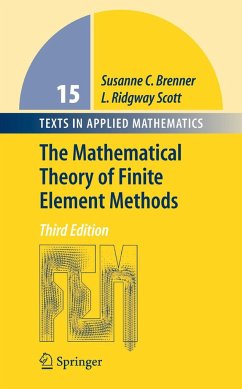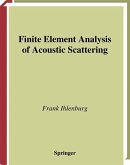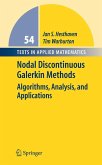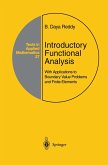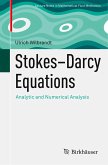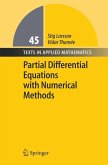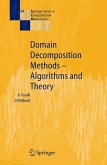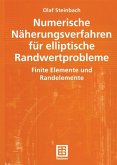This is the third and yet further updated edition of a highly regarded mathematical text. Brenner develops the basic mathematical theory of the finite element method, the most widely used technique for engineering design and analysis.
Mathematics is playing an ever more important role in the physical and biological sciences, provoking a blurring of boundaries between scienti?c disciplines and a resurgence of interest in the modern as well as the cl- sical techniques of applied mathematics. This renewal of interest, both in research and teaching, has led to the establishment of the series Texts in Applied Mathematics (TAM). The development of new courses is a natural consequence of a high level of excitement on the research frontier as newer techniques, such as numerical and symbolic computer systems, dynamical systems, and chaos, mix with and reinforce the traditional methods of applied mathematics. Thus, the purpose of this textbook series is to meet the current and future needs of these advances and to encourage the teaching of new courses. TAMwillpublishtextbookssuitableforuseinadvancedundergraduate and beginning graduate courses, and will complement the Applied Mat- matical Sciences (AMS) series, which will focus on advanced textbooks and research-level monographs. Pasadena, California J.E. Marsden Providence, Rhode Island L. Sirovich College Park, Maryland S.S. Antman Preface to the Third Edition This edition contains four new sections on the following topics: the BDDC domain decomposition preconditioner (Section 7.8), a convergent ad- tive algorithm (Section 9.5), interior penalty methods (Section 10.5) and 1 Poincar´ e-Friedrichs inequalities for piecewise W functions (Section 10.6).
Mathematics is playing an ever more important role in the physical and biological sciences, provoking a blurring of boundaries between scienti?c disciplines and a resurgence of interest in the modern as well as the cl- sical techniques of applied mathematics. This renewal of interest, both in research and teaching, has led to the establishment of the series Texts in Applied Mathematics (TAM). The development of new courses is a natural consequence of a high level of excitement on the research frontier as newer techniques, such as numerical and symbolic computer systems, dynamical systems, and chaos, mix with and reinforce the traditional methods of applied mathematics. Thus, the purpose of this textbook series is to meet the current and future needs of these advances and to encourage the teaching of new courses. TAMwillpublishtextbookssuitableforuseinadvancedundergraduate and beginning graduate courses, and will complement the Applied Mat- matical Sciences (AMS) series, which will focus on advanced textbooks and research-level monographs. Pasadena, California J.E. Marsden Providence, Rhode Island L. Sirovich College Park, Maryland S.S. Antman Preface to the Third Edition This edition contains four new sections on the following topics: the BDDC domain decomposition preconditioner (Section 7.8), a convergent ad- tive algorithm (Section 9.5), interior penalty methods (Section 10.5) and 1 Poincar´ e-Friedrichs inequalities for piecewise W functions (Section 10.6).
"[This is] a well-written book. A great deal of material is covered, and students who have taken the trouble to master at least some of the advanced material in the later chapters would be well placed to embark on research in the area."
ZENTRALBLATT MATH
ZENTRALBLATT MATH
Second Edition S.C. Brenner and L.R. Scott The Mathematical Theory of Finite Element Methods "[This is] a well-written book. A great deal of material is covered, and students who have taken the trouble to master at least some of the advanced material in the later chapters would be well placed to embark on research in the area." ZENTRALBLATT MATH From the reviews of the third edition: "An excelent survey of the deep mathematical roots of finite element methods as well as of some of the newest and most formal results concerning these methods. ... The approach remains very clear and precise ... . A significant number of examples and exercises improve considerably the accessability of the text. The authors also point out different ways the book could be used in various courses. ... valuable reference and source for researchers (mainly mathematicians) in the topic." (Calin Ioan Gheorghiu, Zentralblatt MATH, Vol. 1135 (13), 2008)

